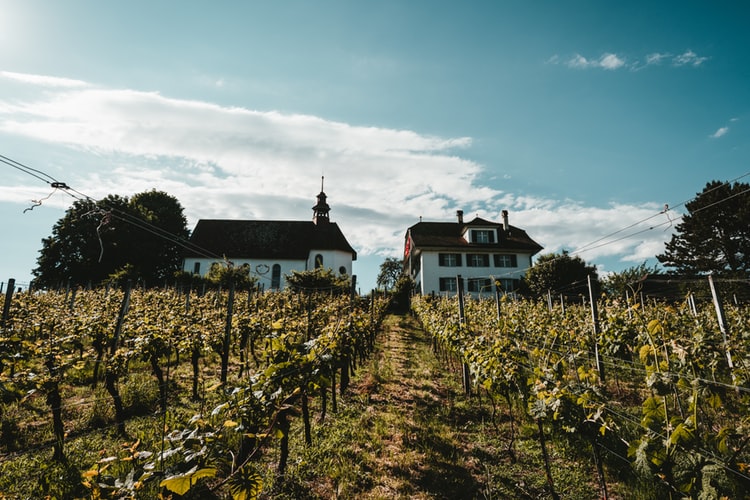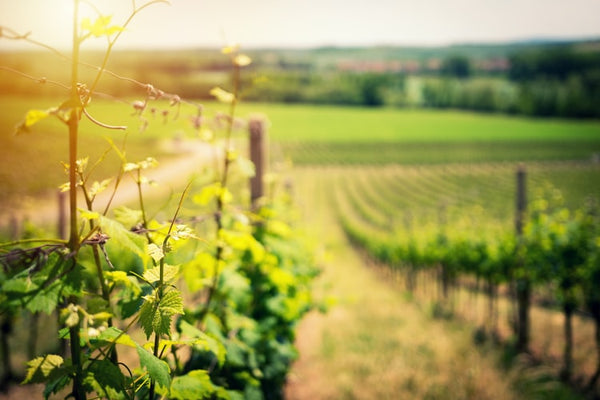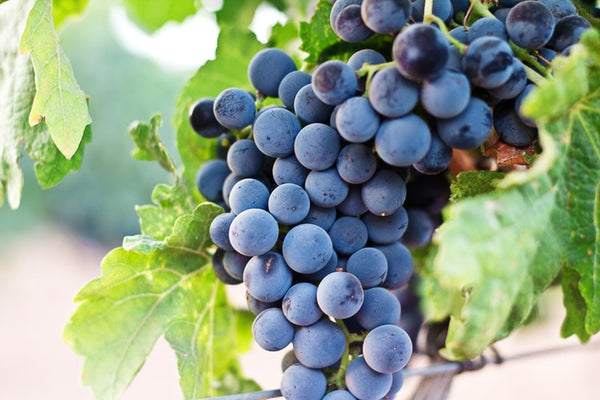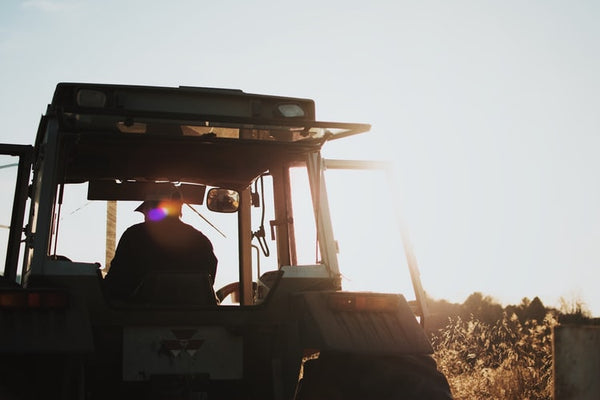A Year in a Vineyard

As we approach harvest time, we approach the key point of the entire year from a winemakers point of view. All the hard work of the year comes down to these pivotal weeks; Will the weather behave itself or will we have to make compromises on the harvest dates? Will the sun be too hot, the rain too torrential or will everything work out alright? Even in a good year, it's a round-the-clock, back-breaking experience and at the end of it all, good bottles are usually opened to celebrate another years work come to fruition.
Yet, there's a lot more to the year than just the harvest itself and whilst this is the most important part of the year, everything that leads up to it ultimately defines the potential outcome; weather aside! Wine-making is a year-round job and most of that time is spent in the vineyards. Let's have a look at how that looks over the course of a typical year in Europe:

January
The vines start the New Year in much the same condition as the rest of us; fast asleep. The leaves have long since gone, and the green canes that grew in the summer before will have lignified; that is, turned brown and woody. Any extra carbohydrates will be stored deep in the trunk of the vine and this is a sign that winter pruning can begin. Traditionally pruning starts on the 22nd January or the feast of the patron saint of vignerons, St. Vincent, although for practical reasons it tends to begin a lot sooner. Winter pruning is an arduous but necessary task as it determines the numer of buds left on the vine for this years growing season and subsequent harvest. Not the most thrilling of jobs in the cold winter but there's little rest when it comes to the production of good quality wine!
February
After a long, cool winter this is the last month of dormancy for the vines; sap is just starting to stir and circulate in the plant and vine growers across Europe will be finishing their winter pruning and selecting the buds they wish to produce fruit for the coming year. The soil should be freshly ploughed, allowing aeration and deeper penetration for rainfall. Growers will be adding fertilisers and organic matter that will gradually break down, adding nutrients for the plants rapid growth in Spring. This is also the last time of the year to finish repairs on trellising systems and to make any major changes for the coming growing season; once it starts, it goes very quickly indeed!
March
This is typically a month of two halves. The first half includes the final preparation for spring, including planting new vines in areas that are free from frost-danger. Spring does not officially start until the 21st March but the unpredictable variation on temperature has meant this can often come sooner. As the weather warms up in the second half of the month, so does the soil temperature and several things start to happen. The new canes will start to produce sap and the vines will come out of dormancy as the temperature of the soil reaches around 10°C . The winter buds will slowly expand and become woolly, leading to eventual budburst as seen in the picture above. Spring is finally here!

April
Assuming there haven't been any Spring frosts that have already caused the vigneron to panic, this will be a time of rapid growth in the vineyard, not only in the vine but all indigenous plants or cover crops as well. In most vineyards this will be a good time to start spraying plants against various insects and diseases, as well as considering some extra nutrients for the soil as the vine will typically outstrip its available resources, especially on soils with poor fertility. Weed control is paramount at this stage as well, so as not to deprive the vines of the nutrients it so badly needs at this time. It has to be said, this is typically a beautiful time to visit the vineyards as the land is alive with the activity of farmers, and the emerging green shoots are beautiful to look at!
May
Much the same as April, with a great deal of green growth and management of the soil and canopy to be done. With warmer temperatures, buds are starting to develop earlier than usual and the late Spring frosts are particularly harmful, wiping out not only the potential crop but in severe cases, even limiting the vines ability to recover and produce extra buds. There's still lots of work to be done to prevent these outbreaks of frost and to shelter as much of the vineyards as possible. Whilst wealthy producers may go as far as hiring helicopters to disperse the cool pockets of air, most vignerons will be up all night, lighting fires and trying to keep cool air from settling. A hard month lies ahead.
June
Another vital month in the annual cycle of the vine and a beautiful month to be in Barcelona! The vines will still be growing green material at a rapid pace and more importantly, the plants will start to flower. This is the process where the embryonic grape clusters pollinate and are fertilised; without this process, there can be no grapes and therefore no wine. The plants are very vulnerable at this time of the year, in particular to short and violent changes of weather, which seems to continue year after year. Without appropriate flowering, yields will be drastically low and prices could rise as a result. June is the ideal month to visit a winery; there is plenty of activity in the vineyards, the plants are looking stunning with their shoots reaching for the sky and the small clusters flowering across the vineyards. A wonderful day out and a great opportunity to meet some local wine-makers!

July
A baking hot month under the European sun for both us and for the grapes; a few years ago, during July 2015, it even became so hot that the plants stopped photosynthesising for a few weeks! As flowering is concluded at this stage, the vines are suddenly the proud parents of small, tightly knit bunches of hard, green grapes. This is the first indication that the grower has of the size and quality of the crop for the year and some will even begin 'green harvesting' at this stage, which is the act of removing some bunches of grapes in order to help concentrate the remaining bunches. Depending on how warm it is, veraison can begin in late July or early August, that is to say, the changing of the colour of the grapes to white and red depending on their variety.
August
Traditionally a blisteringly hot month in Europe, which explains why most sensible people take the month off and hurl themselves into the sea. However, for immobile vines it is a particularly important month due to the phenomenon of veraison. This is the onset of berry ripening and also when the pigmentation starts to form in red grapes, leading to the distinction in colour between the different types of grapes. Red grapes will start to turn a light berry-red colour, whilst white grapes will start to turn yellow and golden. This is a key part of the life cycle of the vine and the vignerons will be hard at work to ensure it goes smoothly. Leaves will be cut away to expose grape clusters to extra sunshine and sometimes bunches of grapes will be removed in a process known as 'green harvesting' in order to concentrate sugars in the remaining bunches. Eyes will be cast towards weather forecasts between now and harvest, as this 2-3 month period is vitally important to get quality grapes and therefore, the potential to make quality wine.
September
So it begins – the harvest is upon us! Spain is a vast, diverse country with regards to wine production and so unsurprisingly, there are various different stages of harvest. By this point, grapes grown for sparkling wine are already mid-way through harvesting as they tend to be picked slightly earlier to retain the high acidity that is prized for ageing potential in older wines and freshness in younger wines. A lot of white wines aiming to retain bright fruit flavours and high acidity will also be being picked, particularly in hot regions where the grapes can easily over-ripen and produce wines with unbalanced flavours and even some light reds, particularly Tempranillo may well undergo an early harvest. Vignerons and wine-makers alike will keep a wary eye on the sky, as excess rain during harvest can induce rots, fungi and often dilute the flavours they have worked so hard to nurture. Quality-minded producers will be spending a lot of money to hire trained pickers to gently harvest the grapes before transporting them in small, 15kg boxes to avoid crushing the grapes and losing precious flavours and aromas to oxidation. An entire years worth of effort comes down to these next few crucial months, as the saying goes: 'It's possible to make very bad wine with good grapes, but it's impossible to make great wine with bad grapes!”

October
The harvest is in full swing! Visit any major vineyard, especially those harvesting red grapes at this time of the year and you'll find a very busy time for most vignerons and wine-makers. Harvesting the grapes is always a delicate negotiation with the weather; the fact that the 12th October would be ideal according to your plans isn't always factored in by mother nature, who is quite prone to rain at this time of the year, promoting both fungal rot and dilution of the grapes, forcing workers to pick earlier than otherwise desired. The winery itself will be working hard everyday and, in big commercial operations, around the clock to clean, select, destem, press and start the fermentation process for the incoming grapes. Hired hands mix with experienced, full time staff, the fields are alive with the sounds of picking and all this time, whoever owns the operation is praying that this year will see enough healthy, ripe grapes to make a reasonable profit. One of the real beauties of wine is this reliance on the basic crop; the humble grape. With the right phenolic ripeness, balance of acidity and sugar and the attention of a skilled wine-maker, the sky is the limit.
November
This is typically the last month of the harvest for most wine-makers and indeed, practically all the white grapes and most of the reds will have been picked, pressed and begun fermentation already, with the exception of some late-ripening varieties or those small pockets of grapes in particular micro-climates. The big task in November is making the wine; with winery space at a premium and stainless steel tanks, barrels and concrete eggs all full of fermenting wine that has to be monitored constantly in order to make sure the temperatures, nutrient levels and volatile components are all in check. It can be a pretty stressful place to be! Now the time in the vineyard is more or less over, biology takes a back-seat to chemistry as science and artistry vie for control of the process. If the harvest was good and a good crop of healthy grapes was brought in, the sky is the limit for a skilled wine-maker. If the yield was low and/or poor quality due to rots, fungi, weather conditions or unforeseen circumstances then the wine-maker will have a challenge on their hands to turn it into a good quality wine that can return the investment of the year.
December
The harvest is well and truly over! The grapes have been picked and the main focus will now be in the winery itself, as wines finish fermentation at different periods, destined for different styles of storage and ageing before being included in any final blends. In the vineyard, this is an excellent opportunity to prepare for the next year, with some growers choosing to clean up any unwanted weeds that have been growing throughout the harvest, wash the hard wood of the vines with a copper-based fungicide and cultivate the soil to allow the winter rains to soak in deeply. In cooler climates, a lot of growers now start 'buttage', that is the ploughing of soil close to the base of the vines to protect them against the cold winter weather. General maintenance work may start, but nearly all efforts will be focused towards the newly fermented wine and perhaps even an opportunity to take a break every now and again; certainly deserved after the strenuous efforts of the harvest!
For more information on how to travel with wine, check out the links below:
Also in Lazenne Blog

10 Memorable Wine Experiences

Drinking Hungarian Wine in Budapest







